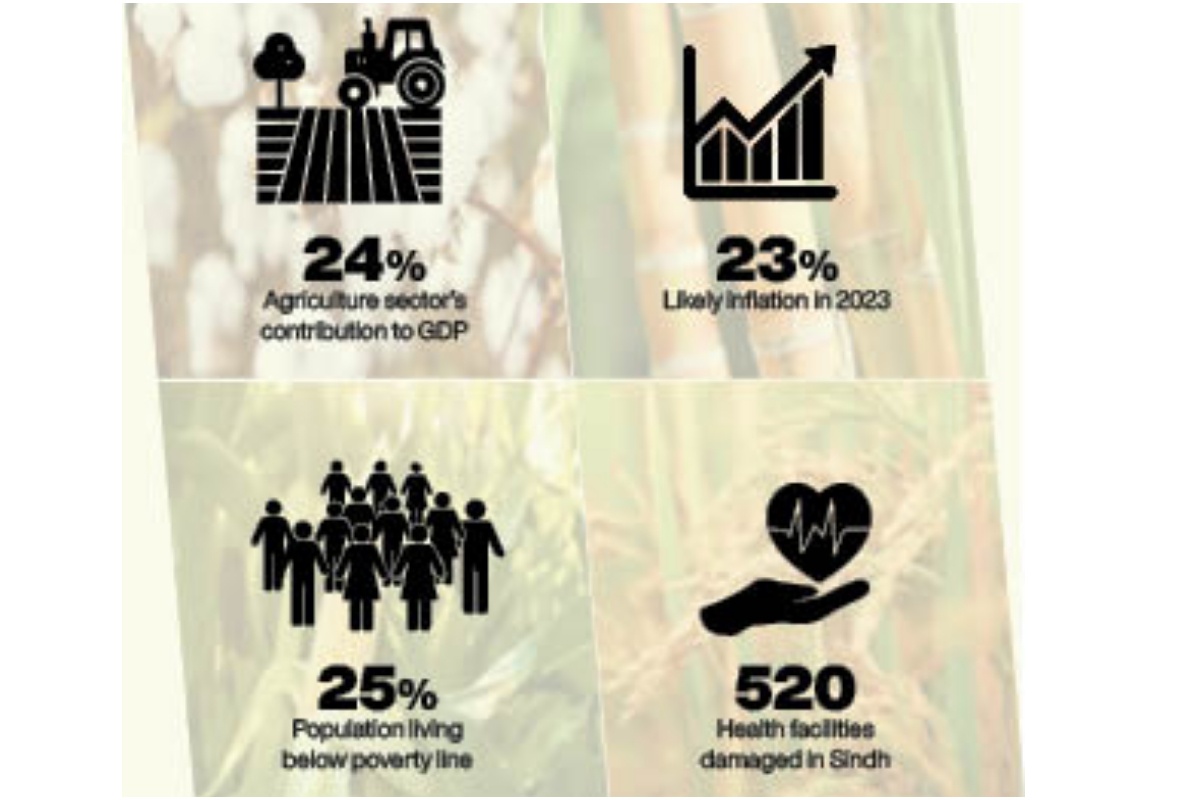
A Hard Row to Hoe
Pakistan being the agrarian country has failed to exploit the true potential of agriculture since inception, except in 1970s when Prime Minister Zulfikar Ali Bhutto, after sweeping the elections, started making reforms to achieve economic equality and empower the small farmers.
At that time, the majority of the population used to live in the rural areas, which necessitated the introduction of land reforms. The agriculture reforms were meant to improve the economy because the sector was the mainstay of it.
Bhutto fixed the ceiling of irrigated land for individual holdings at 150 acres and for the un-irrigated land, it was fixed at 300 acres. The landholding aristocracy got infuriated by these reforms, perceiving it a threat to their well-established positions. Unfortunately, this leads to dethroning of Bhutto from the office.
Agriculture, one of the largest sectors of the economy, contributes around 24 per cent to the gross domestic product (GDP) and hosts a large proportion of the population directly or indirectly.
The recent floods have caused a devastating blow to the country’s agriculture sector, besides exacerbated several problems in the region, including massive crop losses, increasing rural poverty and food insecurity that need immediate attention of the government.
No doubt, the coalition government led by the Pakistan Muslim League (PML-N) has taken several measures, which needs to be applauded but the structural flaws plaguing the sector for decades also need to be addressed once and for all. For this purpose, the policymakers have to revise their policies for the revival of the agriculture sector. Besides, the farmers representation should also be included in the decision making process, while modern agricultural techniques based on the latest technology such as indoor vertical farming to reduce water usage and livestock farming technology to improve the management of livestock, should be adopted.
Despite enormous natural resources and climate diversity, Pakistan is confronted with several gigantic challenges such as rising poverty and high inflation.
The Covid-19 pandemic; followed by the uncertain political and economic unrest and the flash floods in August and September had jolted the country’s economy, including social, educational, health, communication, energy, irrigation and agriculture sectors, resulting in an upward increase in the poverty rate, price hike and inflation, which badly affected the common man.
In a recent report the World Bank has said that an estimated six to nine million Pakistanis are likely to be dragged into poverty as a result of the recent monsoon floods that killed around 1,700 people including women and children, destroyed over two million houses and displaced eight million people, besides inflicting around $40 billion economic losses and put a third of the nation underwater.
It also said that the poverty rate was expected to rise between 2.5 and four percentage points as a direct consequence of floods, which caused loss of jobs, livestock, agriculture harvests and houses.
Similarly, the spread of waterborne diseases and an increase in the food prices across Pakistan would also be the cause of concern for the authorities, while, according to estimates, the inflation will stand at 23 per cent during the financial year 2023.
Pakistan’s around 20 to 25 per cent population is living below the poverty line, mainly in underdeveloped areas.
To bring prosperity back to the country, the government needs to reduce its expenditures on defence and other luxuries, bring down the inflation and enhance the spending on the development of the areas.
It also has to promote technical and vocational education in those districts, where the poverty ratio is high, especially in the rural areas of the country.
Poverty is also one of the main reasons of an increase in the criminal activities such as robberies, theft, snatching, kidnapping for ransom and murders. Besides, there is a high risk of malnutrition, which can lead to severe health problems for the people.
A rise in poverty and inflation are linked with the poor economic conditions of the country due to huge burden of loans. None of the successive governments have ever made policies, which can lessen the debt burden rather they put more burden on the people.
Coming back to the agriculture sector, the United Nations Satellite Centre’s imagery indicates an estimated eight million people still potentially exposed to floodwaters or living close to the flooded areas. Around 11 districts of Sindh and two districts of Balochistan are still inundated with floodwaters.
In a report, the UN Office for the Coordination of Humanitarian Assistance revealed that the floodwaters continued to recede in many areas but standing floodwaters continue to be present in Dadu, Kambar-Shahdadkot, Khairpur, Mirpurkhas, Jamshoro, Sanghar, Umerkot, Badin, Shaheed Benazirabad and Naushero Feroze districts in Sindh and Sohbatpur and Jaffarabad districts in Balochistan.
No doubt, the floods have had a significant impact on health of the people living in these affected areas, particularly women and children. Poor sanitation and contaminated water resources are adversely affecting the health of the people, as several cases of diarrhea and other waterborne diseases are still prevalent.
Moreover, overcrowded and makeshift shelters, lack of proper health infrastructure and inadequate clean drinking water and sanitation have multiplied the risks of severe health problems such as skin and respiratory diseases among the inhabitants.
The food security sector indicates a persistent and increasing need for emergency food assistance moving into the first quarter of 2023 and a failure to address this need would worsen the already frail food security situation and drive more people into poverty.
According to the Provincial Disaster Management Authority of Sindh, over 240,000 people remain displaced in the province as of December 3, 2022, down from 6.5 million in early September. Nearly 90 per cent of the flood-displaced people are reportedly with host communities, while the remaining are in tent cities and relief camps. However, high malaria and cholera cases are still being reported in some districts of Sindh and Balochistan where standing water is the main cause of this problem.
According to official estimates, the floods have completely or partially damaged 520 health facilities in Sindh alone, severely limiting access to these services.
Farmers and rural communities are among the people hardest hit by the floods. The UN’s Food and Agriculture Organisation (FAO) estimates that as many as 9.4 million acres of crops in Pakistan — including staples such as cotton, sugarcane, vegetables, fodder for livestock and orchards —have been destroyed.
The farmers across the country had already been facing an uphill task. For several years, the rising sea levels have contributed to increasingly high saline levels in the soil, making it difficult for the crops to flourish. Now, with water flooding the agricultural lands, they are unable to plant crops at all.
The situation calls for immediate support to these vulnerable people in the shape of housing, access to clean drinking water and food, as the prospects for harvesting remains bleak in the near future.
Catch all the Economic Pulse News, Breaking News Event and Latest News Updates on The BOL News
Download The BOL News App to get the Daily News Update & Live News.








 Read the complete story text.
Read the complete story text. Listen to audio of the story.
Listen to audio of the story.